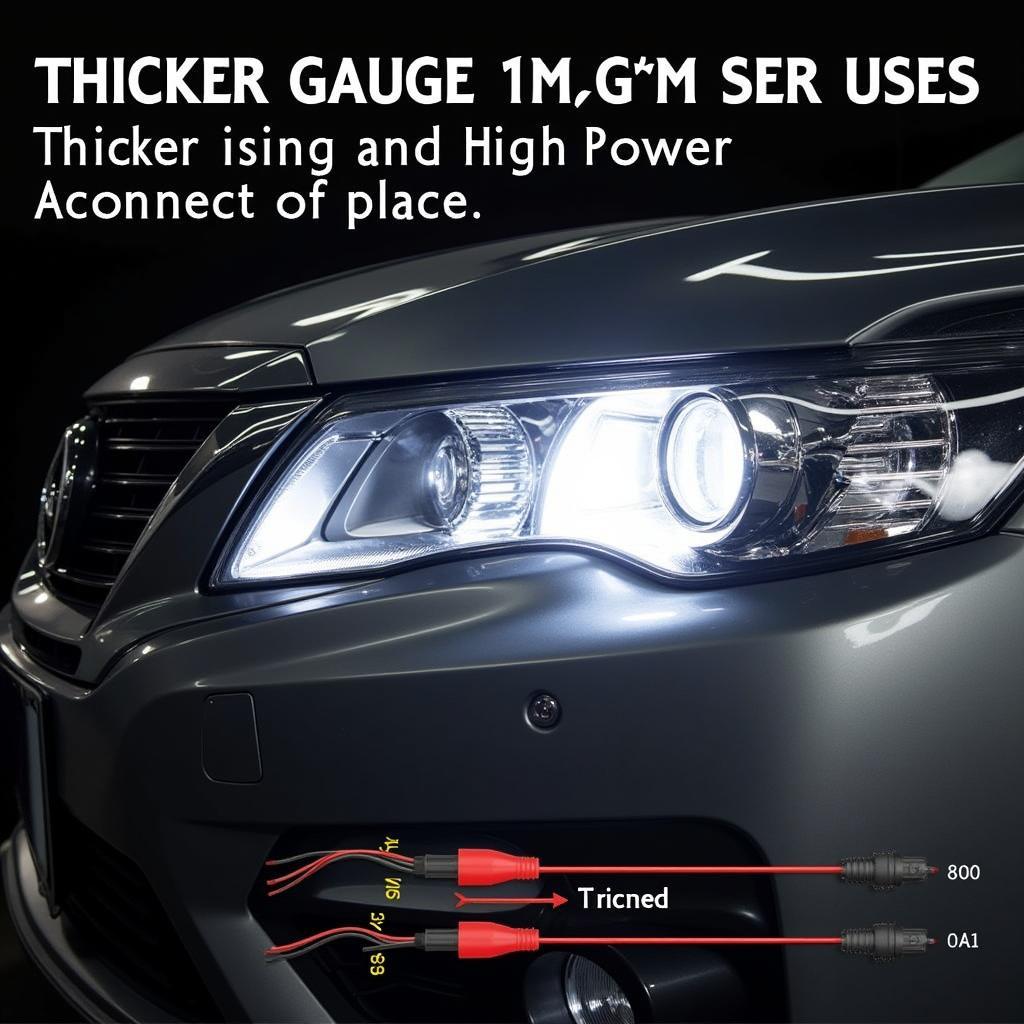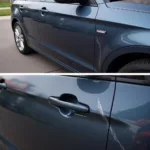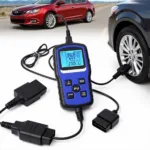When it comes to car electric repairs, the question “can you attach a thicker bit of wire?” often arises. Understanding wire gauge and its impact on your car’s electrical system is crucial for safe and effective repairs. While using a thicker wire might seem like a simple solution, it’s essential to consider the potential implications and ensure compatibility with the existing electrical components. Choosing the incorrect wire size can lead to anything from minor inconveniences to serious safety hazards.
Understanding Wire Gauge in Car Electrical Systems
Wire gauge refers to the thickness of the wire. A lower gauge number indicates a thicker wire, capable of carrying more current. Conversely, a higher gauge number represents a thinner wire with less current-carrying capacity. Using the wrong gauge wire can lead to overheating, melted insulation, and even fire. Therefore, understanding the relationship between wire gauge and current draw is paramount for any car electric repairs.
Why Wire Gauge Matters
The electrical system in your vehicle is carefully designed with specific wire gauges for each circuit. These gauges are chosen based on the expected current draw of the components in that circuit. Using a thicker wire than necessary might not seem problematic, but using a thinner wire is definitely a recipe for disaster.
When Thicker Wire IS Necessary
There are instances when using a thicker gauge wire is appropriate, such as when upgrading to a more powerful component that draws more current. For example, installing brighter headlights or a more powerful sound system might require a thicker wire to handle the increased load.
In such cases, consult the manufacturer’s specifications for the new component to determine the correct wire gauge. This will ensure the wiring is adequate for the increased current demand. Failure to do so could result in damage to the component or even a fire hazard.
Risks of Using an Incorrect Wire Gauge
While using a slightly thicker wire might seem harmless, using the wrong gauge – especially a thinner one – can have serious consequences. An undersized wire can overheat, melt the insulation, and potentially cause a fire. Overheating can also damage the connected components and create electrical shorts.
Overheating and Fire Hazards
When a wire carries more current than it’s designed for, it generates heat. If the wire is too thin, this heat can build up to dangerous levels, melting the insulation and potentially igniting nearby flammable materials.
Damage to Electrical Components
Overheating can also damage the connected electrical components. Excessive heat can cause sensitive electronic components to malfunction or fail completely. This can lead to expensive repairs and frustrating downtime.
How to Determine the Correct Wire Gauge
Determining the correct wire gauge involves understanding the current requirements of the circuit and the length of the wire run. Consulting a wiring diagram for your specific vehicle model is crucial. These diagrams provide information about the wire gauges used in each circuit.
Consulting Wiring Diagrams
Wiring diagrams are essential tools for car electric repairs. They provide a detailed map of the electrical system, showing the connections between components and the wire gauges used in each circuit. These diagrams are typically found in the vehicle’s service manual.
Calculating Current Draw and Wire Length
If you are upgrading a component, consult the manufacturer’s specifications for the new component’s current draw. Then, use an online wire gauge calculator to determine the appropriate wire size based on the current draw and the length of the wire run.
Conclusion: Choosing the Right Wire for Car Electric Repairs
While using a thicker wire might seem like a safe bet in car electric repairs, it’s vital to choose the correct wire gauge for each specific application. Understanding the relationship between wire gauge, current draw, and wire length is crucial for preventing potential hazards and ensuring the longevity of your vehicle’s electrical system. Remember to consult wiring diagrams and consider seeking professional advice when undertaking complex electrical repairs. Using the right wire gauge ensures safety and optimal performance.
FAQ
- What happens if I use a thinner wire than recommended? Using a thinner wire can lead to overheating, melted insulation, and potentially fire.
- Where can I find the wiring diagram for my car? You can typically find wiring diagrams in your vehicle’s service manual.
- Can I use a thicker wire for all my car electric repairs? While generally safer than using a thinner wire, using an excessively thick wire can be impractical and unnecessary. It’s always best to use the correct gauge for the application.
- How do I calculate the current draw of a component? The manufacturer’s specifications for the component will usually list the current draw.
- What is the importance of wire length in determining the correct gauge? Longer wire runs require thicker gauges to minimize voltage drop.
- Is it safe to do car electric repairs myself? While some simple repairs can be done DIY, more complex repairs are best left to qualified professionals.
- Where can I get help with car electric repairs? You can contact us via WhatsApp: +1(641)206-8880 or Email: [email protected] for 24/7 support from our expert team.
We have other articles on our website that might be helpful to you, such as “Understanding Car Electrical Systems” and “Troubleshooting Common Car Electrical Problems”.
Need help with your car electric repairs? Contact us via WhatsApp: +1(641)206-8880, Email: [email protected]. We have a 24/7 customer support team.



